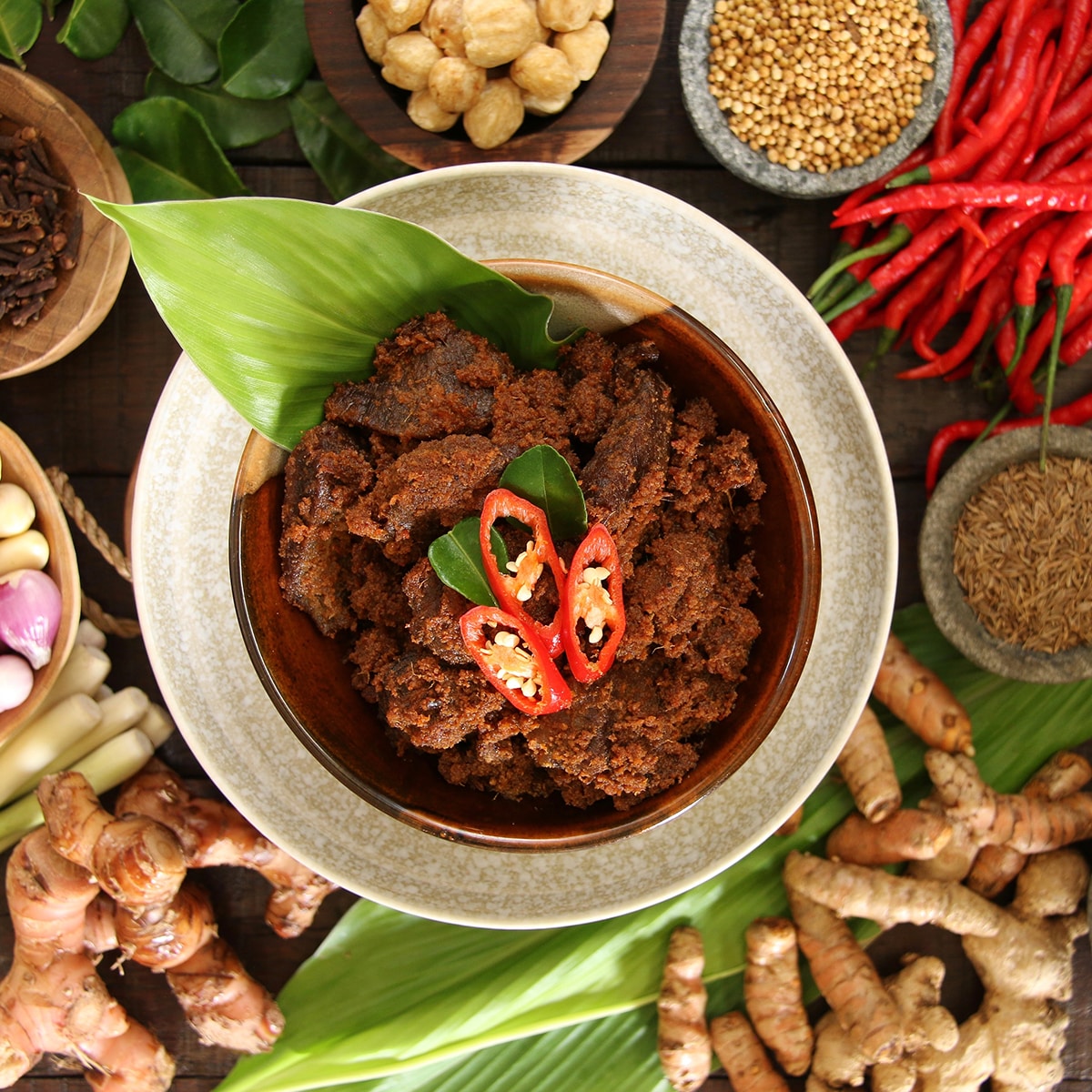Indonesian cuisine is a collection of various regional culinary traditions that formed the archipelagic nation of Indonesia. There are a wide variety of recipes and cuisines in part because Indonesia is composed of approximately 6,000 populated islands of the total 17,508 in the world's largest archipelago, with more than 1,300 ethnic groups. Many regional cuisines exist, often based upon indigenous culture with some foreign influences. Indonesia has around 5,350 traditional recipes, with 30 of them considered the most important. Indonesia's cuisine may include rice, noodle and soup dishes in modest local eateries to street-side snacks and top-dollar plates.
Indonesian cuisine varies greatly by region and has many different influences. Sumatran cuisine, for example, often has Middle Eastern and Indian influences, featuring curried meat and vegetables such as gulai and curry, while Javanese cuisine is mostly indigenous, with some hint of Chinese influence. The cuisines of Eastern Indonesia are similar to Polynesian and Melanesian cuisine. Elements of Chinese cuisine can be seen in Indonesian cuisine: foods such as noodles, meat balls, and spring rolls have been completely assimilated.
Throughout its history, Indonesia has been involved in trade due to its location and natural resources. Additionally, Indonesia's indigenous techniques and ingredients were influenced by India, the Middle East, China, and finally Europe. Spanish and Portuguese traders brought New World produce even before the Dutch came to colonise most of the archipelago. The Indonesian islands the Moluccas (Maluku), which are famed as "the Spice Islands", also contributed to the introduction of native spices, such as cloves and nutmeg, to Indonesian and global cuisine.
Indonesian cuisine often demonstrates complex flavour,acquired from certain ingredients and bumbu spices mixture. Indonesian dishes have rich flavours; most often described as savory, hot and spicy, and also combination of basic tastes such as sweet, salty, sour and bitter. Most Indonesians favour hot and spicy food, thus sambal, Indonesian hot and spicy chili sauce with various optional ingredients, notably shrimp paste, shallots, and others, is a staple condiment at all Indonesian tables. Seven main Indonesian cooking methods are frying, grilling, roasting, dry roasting, sautéing, boiling and steaming.
Opor ayam (curry style), gulai, ketupat, diced potatoes with spices, and bawang goreng served during Lebaran (Eid al-Fitr) in Indonesia
Some popular Indonesian dishes such as nasi goreng, gado-gado, satay, and soto are ubiquitous in the country and are considered national dishes. The official national dish of Indonesia however, is tumpeng, chosen in 2014 by Indonesian Ministry of Tourism and Creative Economy as the dish that binds the diversity of Indonesia's various culinary traditions.[4] However, later in 2018, the same ministry has chosen 5 national dish of Indonesia; they are soto, rendang, satay, nasi goreng, and gado-gado.
Indonesia is the home of sate; one of the country's national dishes, there are many variants across Indonesia.
Today, some popular dishes that originated in Indonesia are now common to neighbouring countries, Malaysia and Singapore. Indonesian dishes such as satay, beef rendang, and sambal are favoured in Malaysia and Singapore. Soy-based dishes, such as variations of tofu and tempeh, are also very popular. Tempeh is regarded as a Javanese invention, a local adaptation of soy-based food fermentation and production. Another fermented food is oncom, similar in some ways to tempeh but using a variety of bases (not only soy), created by different fungi, and particularly popular in West Java.

Komentar
Posting Komentar